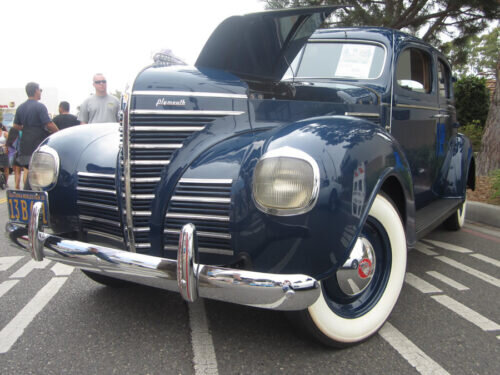License Plates: Unlocking the Code
While at the Petersen for their most recent Breakfast Cruise-In, we stopped in to see their new art wall exhibit that traces the history of license plates. It's no secret that hot rodders and classic car enthusiasts alike have a fascination with license plates, which we delved into during this post from last year. We were anxious to discover the historical gems that the Petersen had to offer, and today we're bringing you a few highlights from our visit to this exhibit.
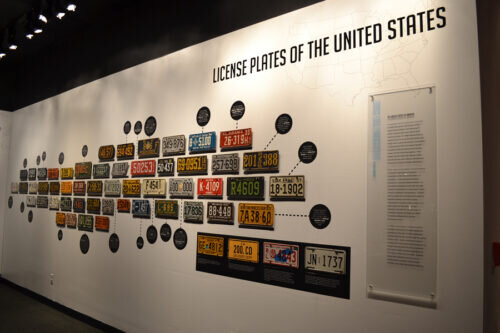
We've all played the license plate game on many a long drive, but there's something about seeing these plates together in one place that takes our fascination to a whole new level. As always, the Petersen does a wonderful job of taking us back in time in this exhibit to teach us how the license plate came to be. "In keeping with the Constitutional precepts limiting the power and scope of the federal government, the licensing of motor vehicles has been left to each individual state.

In 1903 Massachusetts became first to issue license plates and today every state and territory (in addition to Washington DC and several Native American tribal territories) has its own motor vehicle licensing agency."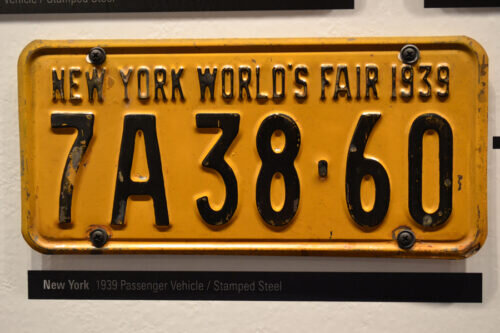
Commemorative and special edition plates have been released throughout the years, like this 1939 New York World's Fair plate,
which reminded us of this beautiful blue Plymouth we saw at the Main Street car show in El Segundo...
... complete with a World's Fair plate detail of its own.

It was fascinating to see the special plates that are rarely seen on the road. "The federal government also issues plates, but only for its own official vehicles and for those owned by foreign diplomats.
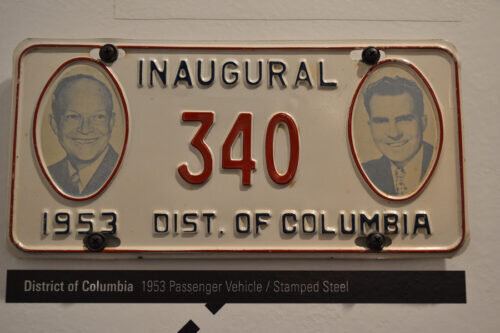 A new plate is introduced every four years to celebrate the presidential inauguration. Such plates are available as souvenirs in any state to those motorists who make a significant enough contribution to the efforts of the winning political party."
A new plate is introduced every four years to celebrate the presidential inauguration. Such plates are available as souvenirs in any state to those motorists who make a significant enough contribution to the efforts of the winning political party."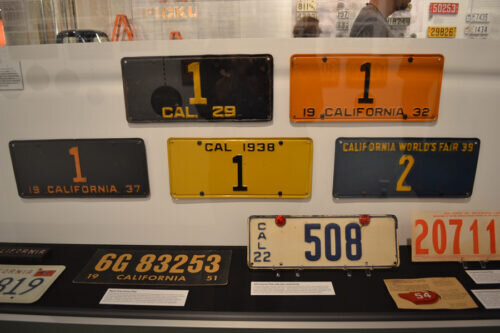 These State Government VIP plates almost didn't look real, but they are and serve a special purpose. "Single digit numbers on California license plates are normally reserved for high ranking state government officials. The governor is issued plate number '1', the lieutenant governor is issued plate number '2', and other officials are issued plates with correspondingly higher numbers depending on their rank. Their distinctiveness and rarity make them among the most highly prized artifacts among California license plate collectors, especially the governor's plate from 1932, which is desirable because of the popularity of the 1932 Ford and because the 1932 Olympic Games was opened with the governor riding in the car that carried the plate.
These State Government VIP plates almost didn't look real, but they are and serve a special purpose. "Single digit numbers on California license plates are normally reserved for high ranking state government officials. The governor is issued plate number '1', the lieutenant governor is issued plate number '2', and other officials are issued plates with correspondingly higher numbers depending on their rank. Their distinctiveness and rarity make them among the most highly prized artifacts among California license plate collectors, especially the governor's plate from 1932, which is desirable because of the popularity of the 1932 Ford and because the 1932 Olympic Games was opened with the governor riding in the car that carried the plate.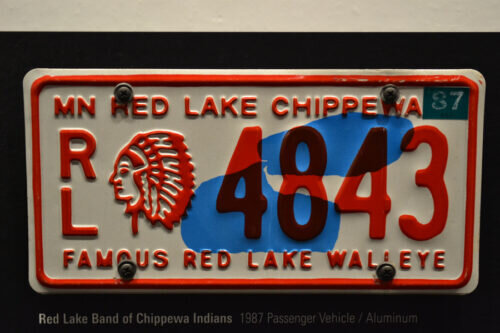 Many state-issued plates include slogans or graphic depictions of objects important to the statewide history or economy.
Many state-issued plates include slogans or graphic depictions of objects important to the statewide history or economy. In 1956, every state in America and all Canadian provinces formally agreed to standardize the size of their passenger vehicle plates at six inches high by twelve inches wide. Such uniformity made it simpler for large vehicle manufacturers to design license plate mounting systems that were readily usable regardless of the area in which the car sold."
In 1956, every state in America and all Canadian provinces formally agreed to standardize the size of their passenger vehicle plates at six inches high by twelve inches wide. Such uniformity made it simpler for large vehicle manufacturers to design license plate mounting systems that were readily usable regardless of the area in which the car sold."
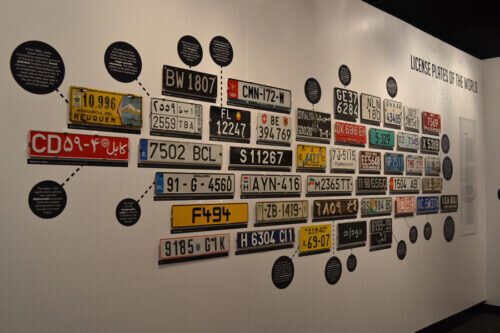
There were so many more plates on display (including this wall of international plates), and the research provided on them answered many questions we had about how and why plates have changed throughout the years. This exhibit will be on display through March 30th, so be sure to stop by the Petersen to see the all of the rare and unusual examples in this interesting collection!

